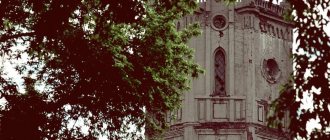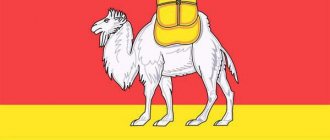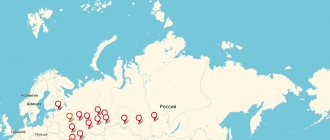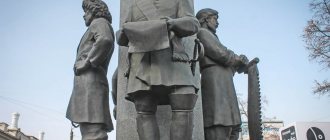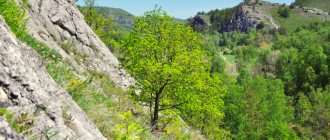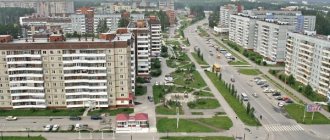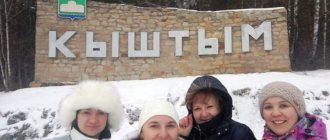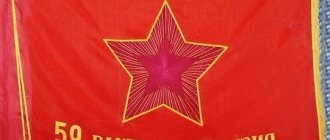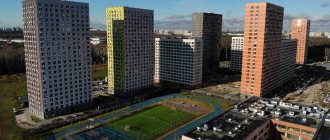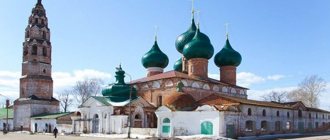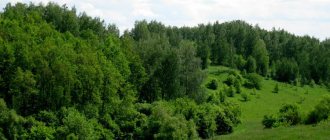For other places with the same name, see Troitsk.
City in Chelyabinsk region, Russia
| Troitsk Troitsk | |
| Town | |
| View of Troitsk | |
| Flag Coat of arms | |
| Location of Troitsk | |
| Troitsk Location of Troitsk Show map of Russia Troitsk Troitsk (Chelyabinsk region) Show map of Chelyabinsk region | |
| Coordinates: 54°05′00″N 61°34′00″E / 54.08333°N Latitude 61.56667°E / 54.08333; 61.56667 Coordinates: 54°05′00″N 61°34′00″E. / 54.08333°N 61.56667°E / 54.08333; 61.56667 | |
| A country | Russia |
| Federal subject | Chelyabinsk region |
| Based | 1743 |
| Government | |
| • Mayor | Alexander Vinogradov |
| Height | 170 m (560 ft) |
| Population (2010 Census) [1] | |
| • General | 78 372 |
| • Evaluate (2018) [2] | 73 911 ( -5,7% ) |
| • Classify | 209th place in 2010 |
| Administrative status | |
| • Subordinate | Troitsk city [3] |
| • Capital from | Troitsky district [3], Troitsk [3] |
| Municipal status | |
| • Urban district | Trinity urban district [3] |
| • Capital from | Troitsky urban district [3], Troitsky municipal district [3] |
| Timezone | UTC+5 (MSK+2[4]) |
| Postal code [5] | 457100 |
| Dialing code(s) | +7 35163 |
| OKTMO ID | 75752000001 |
| Web site | Troick.su |
Troitsk
(Russian: Troitsk) is a city in Chelyabinsk Oblast, Russia, located 175 kilometers (109 mi) east of the southern Urals and about 110 kilometers (68 mi) south of Chelyabinsk on the border with Kazakhstan. It faces east the Uy River, a branch of the Tobol River. Population: 78,372 (2010 census); [1] 83,862 (2002 census); [6] 90,077 (1989 census). [7]
History[edit]
Memorial plaque with the founding date of Troitsk.
Troitsk was founded in 1743 by Ivan Neplyuev as the main fortress of the Orenburg line of forts during the Bashkir War of 1735-1740 and to protect the southern borders of Russia. He played an important role in the rebellion of Pugachev, who besieged and captured the city in 1774.
Hotel "Rockwool", meat processing plant, reinforced concrete products and parquet, clothing factory, railway and road transport. enterprises. The small business employs more than 6,000 people. [8]
Orthodox churches and mosques of Troitsk
Orthodox culture is reflected in the very name of Trinity. The religious life of the city, which became a meeting place of the Slavic and Turkic worlds, united Christianity and Islam. There are noteworthy temples of both faiths here.
Transfiguration Cathedral
- Address: st. Gagarina, 1/10.
The main temple of the Holy Kazan Convent, the largest building of the monastery complex and one of the main attractions of the city is the majestic five-domed white-stone Transfiguration Cathedral. It was erected from 1863 to 1870. The initiator and sponsor of the construction was the city merchant P. Tatarinov.
The walls of the temple remember the last Russian monarch; while still Tsarevich Nikolai Alexandrovich Romanov came here on a visit and bestowed the Icon of St. Nicholas the Wonderworker.
The valuable Shrine has been preserved to this day under the jurisdiction of the temple. During the years of religious oblivion, the cathedral building was used for various needs; it managed to be a quartering place for troops, a military school and a sports hall. After the revival of the monastery, the temple became operational again
Church of Demetrius of Thessalonica
- Address: st. Gagarina, 7A.
Behind Neplyuev, near the square now named after Dmitry of Thessaloniki, stands a temple dedicated to this saint. The “ship-type” structure belongs to the classical architectural style with Baroque elements in the external decor.
It was erected in 1873 as a cemetery church assigned to the Holy Trinity Cathedral. From 1930 to 1947 the temple did not function, after which it was returned to believers and is still in use today. There is a Sunday school at the church.
Alexander Nevsky Church
- Address: Shosseynaya street.
In the second half of the 19th century, settlers from the Samara, Kazan and Tambov Provinces lived in the so-called “zarechnaya settlement”. On the initiative of the residents, a church was erected here in honor of St. Alexander Nevsky using public funds.
Construction dates back to 1884-1889. from the moment of laying to consecration. In terms of its architectural appearance, it is somewhat similar to the Demetrius Church, differing in two later added chapels in the classic style.
Merchants from neighboring regions took part financially in the arrangement of the temple, iconostasis and the surrounding area. Since 1893, a parochial school was established at the church. In the 1960s the closed church housed a temple and a museum. It became operational again in 1991.
Church of Elijah the Prophet
- Address: st. Denisova, 3B.
The brick religious building with a characteristic rounded dome is the only example of neo-Byzantine style architecture in the city. The Church of Elijah the Prophet was built in 1895 as a prison church and was assigned to the Holy Trinity Cathedral.
The merchant Kormiltsev financed its construction. With the advent of Soviet power, the prison was liquidated, the church was closed in 1920, and 10 years later they wanted to dismantle it into bricks for the purpose of using building material.
Fortunately, this important cultural and architectural monument for the city has not disappeared. In the post-war period, the building served as an archive room, and later there was a ski base here. In 1998, restoration began and the temple became operational again.
Mosque named after Zainulla-Hazrat Rasulev
- Address: Oktyabrskaya street, 122.
An architectural monument of regional significance, the Islamic temple appeared in the city in 1863 thanks to the merchant G.Yu. Yaushev, who donated funds for its construction. In those years, the number of Muslims in the city exceeded 4 thousand people. Initially called the Third Cathedral Mosque, the first imams were representatives of the Rakhmankulov family.
It is known that Friday services in this temple were conducted by the famous Muslim preacher Zainulla Rasulev. Today the mosque is named after him. This decision was made in 2008, when the Islamic temple, after being forgotten during the Soviet era and several decades of restoration work, was restored and returned to believers.
Ghataullah Mullah Mosque
- Address: st. named after V.I. Lenina, 117.
The second city mosque, built in 1894-1985, is also considered an object of cultural heritage of the peoples of the Russian Federation. Its construction was also sponsored by one of the representatives of the Yaushev merchant family, Abdulvali Akhmetzhanovich. Initially it was the sixth cathedral mosque, now named after its first imam. Inactive from the 1920s until the early 1990s. In the first decade of the 21st century, restoration took place.
Chapel in honor of the Icon of the Mother of God “Three-Handed”
- Address: st. Volodarsky, 24.
The latest of the monastery buildings, dated 1911. The small elegant chapel attracts with its unusual appearance and decor; the architectural appearance contains features of the neo-Russian style. It was built with donations. It served as a prayer room and a church monastery shop. It was closing. It was again transferred to the monastery in 2013.
Population [edit]
| Year | Residents |
| 1897 | 23,299 |
| 1939 | 46,693 |
| 1959 | 76,325 |
| 1970 | 85,469 |
| 1979 | 87 500 |
| 1989 | 90,077 |
| 2002 | 83 862 |
| 2010 | 78 372 |
| 2012 | 78,089 |
| 2014 | 77,176 |
| 2015 | 76 453 |
Historical, cultural and architectural sights
Troitsk is famous as a city with a rich architectural heritage. Some interesting buildings are not just monuments of urban planning, but also have cultural and historical significance.
Water tower
- Address: Autodromnaya street.
The water tower has become one of the most famous architectural objects in the city due to its unusual appearance. Outwardly, you can’t even tell that this is a Soviet-era building; it seems to have come down to us from ancient times; there is something “Gothic” in the aesthetics of the building. The original building, related to the style of early postmodernism, was created according to the design of V. Sanzharevsky. The tower was erected on a vacant lot in 1927.
The building of the former City Council
- Address: st. Lenina, 69.
At the intersection of the current Lenin and Klimov streets, formerly called Bazarnaya Street and Vasilyevsky Lane, respectively, a remarkable two-story building has stood since the 1850s.
In the traditions of the city's development at that time, its architecture corresponded to classicism. Elements of the Russian style are also visible in the appearance of the building. The house was erected by the merchant Osipov at his own expense as a residential mansion, but subsequently the owner transferred it to the jurisdiction of the customs office.
And when the customs department was liquidated, the city government was located here. The cultural heritage site of regional significance today belongs to the city and is used by Russian Post.
Shopping arcade of the Yaushev brothers
- Address: st. named after the Malyshev Brothers, 32.
Representatives of the Yaushev family of entrepreneurs owned trading houses in many cities of the country, their business empire had a wide geography, and the dynasty settled in Troitsk by the beginning of the century.
They were allocated a place for the construction of the passage only towards the end of the century; officials delayed for a long time, citing lack of space, and, in the end, provided a wetland area. By 1911, a magnificent building designed by Arkady Fedorov had risen on it.
Its architecture organically combines three styles - neoclassicism, renaissance and baroque. At the time of its appearance, the building was considered progressive in terms of technical solutions and equipment.
Hotel building G.A. Bashkirova
- Address: st. Klimova, 9.
The creation of the architect Arkady Fedorov was a red-brick three-story building in the spirit of Russian Art Nouveau. It was built in 1909 on the initiative and at the expense of the merchant Bashkirov. The Eldorado Hotel, which belonged to him, was located here; it was one of the most famous and respectable in the city.
Our building is used for its historical purpose; the hotel is called “Central”. It was opened here in 2011, after restoration. The hotel is adjacent to the famous restaurant “Stepnoy” in the city, located on the first floor of the historical landmark.
Shopping arcades
- Address: st. Klimova, 5A.
The complex of shopping arcade buildings is considered an architectural monument and a cultural heritage site of Federal significance. They were erected in 1866-1868. through the efforts of famous local merchants and entrepreneurs.
Among those who financed the construction were Yaushev, Bashkirov, Osipov and others. Nowadays, part of the historical and architectural monument is used as a higher educational institution, having hosted the Trinity Branch of Chelyabinsk State University.
House of Culture
- Address: st. Gagarina, 25.
A significant cultural and leisure institution for the settlement and a historical and cultural landmark rolled into one. The building was built in the century before last. According to various sources, it dates back to 1878 or 1889. It was the People's House, where meetings of the nobility were held, and then a theater was located here.
It has served as a city cultural center since the 1950s. Today the institution is part of the Leisure Center. The cultural center hosts mass events, with local bands and touring artists performing on stage.
House-Museum of A.M. Klimova
- Address: st. 30 years of the Komsomol, 15.
The one-story wooden building on Thirty Years of Komsomol Street is closely associated with the name of the writer and journalist Anatoly Klimov. This is his father’s house, where the future writer spent his childhood, then lived here from 1937 to 1945; many of his works were created within these walls.
The city preserves the memory of the famous personality; one of the streets is named after Klimov. A museum dedicated to the writer was first created in his house back in 1985. Didn't work for a while. The exhibition reopened in 2010 as a structural unit of the local history museum.
Men's gymnasium building
- Address: st. them. Yu.A. Gagarina, 19.
The first secondary educational institution in the territory of the present Chelyabinsk region is considered to be the classical men's gymnasium in the city of Troitsk. It was officially opened on the initiative of the mayor V.M. Pupyshev in 1873, and three years later, in 1876, a building was built, which is now an object of cultural heritage of regional significance.
The gymnasium remembers many famous personalities. Linguist V. Krushevsky worked here as a teacher. The school students here were the scientist L.A. Kulik, economist, academician P. Maslov and many others. The building served an educational function at different stages of its history; at the moment it houses a pedagogical school.
Cinema "30 years of the Komsomol"
- Address: Sovetskaya st., 46.
The city has a cinema with more than 100 years of history. At the beginning of the 20th century, a representative of a trading merchant dynasty, the son of a merchant of the second guild, Andrei Radeev, decided to move away from the family’s usual trading business and organize a cinematograph in Troitsk.
So in 1909, the building of the electro-sound theater “Mars” was built, where live films were shown. In 1948, the institution, which retained its function, received a new “typically Soviet” name, becoming “Cinema 30 years of the Komsomol” and under this name it usually appears in lists of attractions.
Today, the “Sun City leisure and entertainment center” operates here, where in addition to a cinema hall there is a bowling alley, billiards and several food outlets.
Links[edit]
Notes[edit]
- ^ a b Federal State Statistics Service (2011). All-Russian Population Census 2010. Volume 1 [All-Russian Population Census 2010, vol. 1]. All-Russian Population Census 2010 [All-Russian Population Census 2010] (in Russian). Federal State Statistics Service.
- "26. The size of the permanent population of the Russian Federation by municipalities as of January 1, 2022". Federal State Statistics Service. Retrieved January 23, 2022.
- ^ abcdefghi Resolution No. 161
- "On the Calculation of Time". Official Internet portal of legal information
. June 3, 2011. Retrieved January 19, 2022. - Post office. Information and computing center of OASU RPO. ( Post office
).
Search for postal service objects ( postal Search for objects
) (in Russian) - ↑
Federal State Statistics Service of Russia (May 21, 2004). The population of the Russian Federation, cities of the Russian Federation within federal districts, urban settlements, urban settlements, settlements, settlements is 3 thousand or more people [Population of Russia, its federal districts, subjects of the Federation, districts, urban settlements, rural settlements - administrative centers and rural settlements with a population of more than 3000 people] (XLS). All-Russian Population Census of 2002 [All-Russian Population Census of 2002] (in Russian). - All-Union Population Census of 1989 Population of Union and Autonomous Republics, Autonomous Regions and Districts, Territories, Regions, Urban Settlements and Village District Centers [All-Union Population Census of 1989: Current Population of Union and Autonomous Republics, Autonomous Regions and Districts, Territories, Regions , districts, urban settlements and villages performing the functions of district administrative centers]. All-Union Population Census of 1989 [All-Union Population Census of 1989] (in Russian). Institute of Demography of the National Research University: Higher School of Economics [Institute of Demography of the National Research University: Higher School of Economics]. 1989 - via Demoscope Weekly
. - https://troick.su/htmlpages/Show/overview/Ogorode. Retrieved December 2, 2016. Missing or empty |title=( help )
- "Review. This city" . Retrieved December 3, 2016.
Sources [edit]
- Legislative Assembly of the Chelyabinsk Region. Resolution No. 161 of May 25, 2006 “On approval of the list of municipalities (administrative-territorial units) of the Chelyabinsk region and the settlements included in them,” as amended. Resolution No. 2255 of October 23, 2014 “On amendments to the list of municipalities (administrative-territorial units) of the Chelyabinsk region and the settlements included in them.” Came into force on the date of official publication. Published: “South Ural Panorama”, No. 111–112, June 14, 2006 (Legislative Assembly of the Chelyabinsk Region. Resolution No. 161 of November 25, 2006 “ On approval of the Register of municipalities (administrative-territorial units) of the Chelyabinsk Region and those included in them composition of settlements").
As amended by Resolution No. 2255 of October 23, 2014, “
On amendments to the register of municipalities (administrative-territorial units) of the Chelyabinsk region and their constituent settlements
. Valid from the date of official publication.).
What to see for a tourist in Troitsk: TOP-5
There are several cities with the name Troitsk on the map of our vast country, one is now part of the Moscow region. Its Ural namesake lies at the confluence of the Uy and Uvelka rivers, 121 km from Chelyabinsk, not far from the Russian-Kazakh border. The city is famous for its architectural monuments of different eras, religious and cultural sites of two faiths and ethnic groups. At the beginning, interesting places are highlighted that will allow you to get a first impression of Troitsk, its history and features.
Dmitrievskaya Square
- Address: Lenin street.
The center of attraction for tourists, the center of city life and one of the calling cards of Troitsk has become the square of an unusual angular shape, located in the western part of the city. Previously, it was called Tabunna, and today it is called Dmitrievskaya, in honor of St. Demetrius of Thessaloniki.
Many significant city attractions are located on or near the square. In 2000-2001, the appearance of the square was transformed, monuments were erected, and a park was laid out nearby.
Monument to I.I. Neplyuev
- Address: Gagarin street.
The history of the city of Troitsk officially began on May 22, 1743 according to the old calendar. On this day, a fortress was founded, named in honor of the Holy Trinity. Its origin is associated with the name of the military and political figure of the Elizabethan era, Admiral Ivan Neplyuev, known for his services in the organization of the South Ural lands.
One of the dominant features of the current appearance of Dmitrievskaya Square and the adjacent park is the monument to this man. The founder of the city is depicted in full growth, he stands in a thoughtful pose, leaning on a saber and directing his gaze to the center of the settlement. This monument is the creation of a group of authors; the monument was cast in Moscow and installed in 2001.
Holy Kazan (Kazan-Bogoroditsky) convent
- Address: st. Gagarina, 1/10.
Arriving in the city of Troitsk, you should definitely visit the active women's Orthodox monastery, the history of which began in 1851. Initially it was a small community at the cemetery church; by 1865 it was officially approved by order of the Holy Synod as a monastery.
Over more than half a century of its history, the monastery has grown, and in 1896 it acquired a parish school, opened to commemorate the coronation of the new monarch, Nicholas II. At the turn of the 19th-20th centuries, it was considered the largest and richest monastery among the monasteries belonging to the Orenburg diocese.
Before the revolution, about 70 nuns lived here. During Soviet times it was closed, the temple buildings were partially destroyed, rebuilt, and used for other purposes. In 1993, by decision of the Russian Orthodox Church, the monastery was returned to religious life.
Holy Trinity Cathedral
- Address: Krasnogvardeyskaya st., 1A.
The main religious attraction of Trinity, in addition to the monastery, is the city’s cathedral of the same name, majestically rising along the banks of the Uy River. The settlement also owes its appearance to Neplyuev. Almost a decade after the founding of the fortress, namely in 1754, a temple was founded on its territory.
The name of the architect adds historical and cultural significance to the religious building. It was the famous foreign specialist Pietro Antonio Trezzini, known for his buildings in St. Petersburg. The temple in the Ural Troitsk, according to sources, is the creation of Pietro Antonio.
Over almost three centuries of its history, the cathedral building suffered two fires, was restored and rebuilt. In the 1840s it was significantly expanded. After the revolution, the temple was closed and returned to believers in 1997.
In the 2000s, restoration work began with the goal of recreating the historical appearance; both the external decoration and the interior were restored. Wall paintings of the 19th century based on surviving fragments were reproduced by S. Kolomytsev and V. Yartseva.
Museum of Local Lore
- Address: st. named after V.I. Lenina, 70.
Fans of historical and cultural tourism often begin their acquaintance with the city from the Museum of Local Lore. It has existed in Troitsk for almost a century; it was established in 1925. Here you can find materials on the history and culture of different eras.
The archaeological part, which is of great interest to visitors, will allow you to come into contact with the antiquities discovered on the territory of the Trinity Fortress. The permanent exhibition tells about the founding of the city, the main stages of its development, the life of the townspeople and merchants, and the peculiarities of local everyday culture. Of the events of recent history, special attention is paid to the Great Patriotic War; a separate exhibition is dedicated to it.
The museum's collection includes a numismatic collection, rare books, and a rich art section. Traditionally for museums of this profile, its halls combine historical, ethnographic and natural science topics; one of the departments is dedicated to the natural features of the region, its flora and fauna.
Interesting monuments and sculptures of Troitsk
A mandatory condition for a tourist who wants to get acquainted with Trinity is a visit to its most famous monuments.
Memory Square and Oath Memorial
- Address: corner of Malyshev Brothers and Gagarin streets.
The city square, which once bore the name of Pavlik Morozov, and since 1995 has become a Square of Memory, draws on the tragic events of the Great Patriotic War. There is a war memorial here. It's called "The Oath." In the center is a statue of a soldier kneeling with his arms outstretched.
Among the local residents, the popular name “Alyosha” stuck to it, which became popular for such monuments thanks to the famous Bulgarian monument, sung in a Soviet song. The concrete monument in Troitsk is the creation of sculptors E.I. Makarov and V.P. Bokareva. The memorial was organized in 1970.
Avenue of Heroes
- Address: Memory Square.
Next to the “Oath” memorial on the territory of the Memory Square there are seven busts of natives of these places who fought on the fronts of the Great Patriotic War and were awarded the title of Heroes of the Soviet Union; their authors are also sculptors Makarov and Bocharov. This part of the park was named “Alley of Heroes”.
Monument to the Holy Trinity
- Address: pl. Dmitrievskaya.
In 2001, during the development of the space on Dmitrievskaya Square, a small granite stele with a bas-relief was placed near the statue of Neplyuev. This is a monument to the Holy Trinity, the words of prayer are engraved on the monument, and the accompanying plaque tells how the city was founded and its name.
Monument to the Trinity Fair
- Address: pl. Dmitrievskaya.
Another stele with a bas-relief in the complex of monuments on Dmitrievskaya Square is dedicated to a phenomenon important for the everyday culture of Troitsk. Historically, the merchant city has been the site of noisy fairs since Elizabethan times, which became famous far beyond the borders of Russia. For the first time, by decree of the Empress, such a ceremony was held here in 1850.
Monument to lawyer F.N. Gobber
The famous lawyer of the 19th century, lawyer Fyodor Plevako, was born in Troitsk. In 2013, a monument was erected to him. The bust was created by Maxim Vedernikov.
Memorial stone in honor of the founding of the Trinity Fortress
- Address: st. Klimova, 5A.
Near the Holy Trinity Cathedral in the place where Trinity began, there is a stone. This is a memorial sign that appeared here in 2008, when Troitsk celebrated its 245th anniversary. The idea for the installation came from local artist Nikolai Levshich. A suitable boulder was discovered near the village of Sanarka and taken to the center of Troitsk. A 4,000-year-old geological artifact became a city monument.
Monument to the Red Guards railway workers
- Address: Kirova street.
On the square near the train station in Troitsk there is a stele crowned with a five-pointed star. This is a monument dedicated to the memory of railway employees who died in battles for Soviet power during the Civil War. It was installed in 1956.
Initially, the plastered monument was inconspicuous, but over the years it became more worn out. The unkempt appearance of the monument, which immediately catches the eye of visitors, prompted its restoration, which was carried out in 2016. The obelisk was covered with tiles, giving it a more formal appearance.
Nature of Troitsk and its surroundings
In the city itself and its surroundings, it is easy to find attractions where it will be pleasant to walk, relax and unwind.
Park of Culture and Leisure named after. N.D. Tomina
- Coordinates on the map: 54.084738, 61.551241.
Along with the House of Culture, the Leisure Center is the only organized park in the city center. It was laid out back in 1908, and a summer club operated on its territory. In Soviet times, the city park of culture and recreation was named after the military leader from the civil war N.D. Tomina, which he wears to this day; a monument to this figure has been erected in the park.
On an area of 6.5 there are shady alleys for quiet walks and unity with nature, a small artificial pond on which you can ride by renting a boat and a catamaran, as well as a variety of park entertainment. There are two Ferris wheels - large and small, many other attractions for children and adults, and areas for sports.
River Uy
- GPS coordinates: 54.074739, 61.553249.
One of the two rivers found in Troitsk, the Uy, is the left tributary of the Tobol. It flows through the territory of Bashkiria, Kurgan and Chelyabinsk regions, on the border of Russia with Kazakhstan. Its waters separate the forest-steppe and steppe natural zones. Troitsk and its surroundings are a great place to get acquainted with an interesting body of water.
Pugachevskaya cave
- Coordinates: 54.071406, 61.580108.
Not far from Troitsk, on the banks of the Uy River, there is a geological monument covered in historical legend and thereby attracting even more attention.
The natural object is a mountain with a rocky ledge and a depression in the form of a cave. There is a belief that it was in it that the leader of the peasant uprising Emelyan Pugachev hid a treasure, which is why the cave was nicknamed Pugachevskaya.
Natural monument “Steppe Dawns”
- Coordinates: 54.097491, 61.494495.
On the right bank of the Uvelka River there is a park that is almost 150 years old. It was founded by merchants who set up their summer cottages and planted valuable tree species here.
During Soviet times, the park was used to organize sanatoriums and kumiss treatment. Currently, the Steppe Dawns park is declared a botanical natural monument of the Chelyabinsk region.
Don't miss reviews of other cities in the Chelyabinsk region - Chebarkul, Satka, Kyshtym, Chelyabinsk, Magnitogorsk, Miass, Zlatoust
Troitsk officially has the status of a historical city and it is no coincidence. Images from different eras and cultures are captured on its streets. A trip here will bring a lot of impressions to the tourist.
